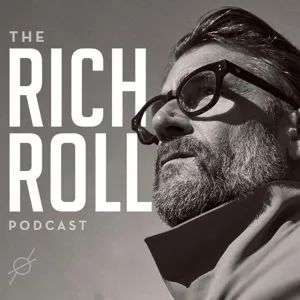Podcast Summary
Respecting the Cultural Significance of Smudging: Harvest sustainably, research traditions, and honor origins when practicing smudging for spiritual and cleansing purposes.
The practice of smudging, or burning sage for spiritual and cleansing purposes, has deep cultural roots in indigenous North American communities, particularly the Dakota and Ho-Chunk cultures. While the potential health benefits and personal enjoyment of this practice are valid, it's essential to approach it with respect and cultural sensitivity. This includes harvesting sustainably, researching traditional methods, and honoring the origins of the practice. Additionally, the term "sage" comes from the Latin word for "feeling healthy," and the practice has been used throughout history to cleanse the air and purify spaces. However, it's crucial not to trivialize or appropriate this sacred practice by using it casually or without proper understanding and respect.
Seek reliable sources for accurate information on practices like burning sage: Invest in reliable sources for accurate info on practices like burning sage, consider using Betterment for smart investing, and be aware of Zigazoo, a safe social media network for kids.
While social media platforms like Instagram and TikTok can provide information on practices like smudging and burning sage, it's important to seek out reliable sources for accurate knowledge. Sites with flashy designs and unconventional fonts may not offer accurate information. A good alternative is to look up the benefits of burning sage on reputable health or wellness websites. Another key takeaway is the introduction of Zigazoo, a social media network specifically designed for kids. Unlike other platforms, Zigazoo is 100% human-moderated, ensuring a safe and fun environment for children. Lastly, burning sage has numerous benefits, including improved mood, better sleep, enhanced cognition, and lower stress levels, among others. It's important to do your research and find reliable sources for accurate information on these practices. Investing involves risk, and it's important to make your money work for you. Betterment is an automated investing and savings app that makes your money hustle while you relax. With high yield cash accounts, diversified portfolios, and tax-efficient strategies, Betterment is the workhorse for your money.
The Science of Smudging with Sage: Limited scientific evidence supports the benefits of smudging with California white sage, and responsible harvesting practices are crucial to preserve its availability.
While there is some scientific interest in the potential benefits of smudging with sage, the evidence is limited and often focuses on the use of sage extracts rather than the practice of smudging itself. The studies that do exist often involve different types of sage or other herbs, making it difficult to draw definitive conclusions about the effects of burning California white sage. Additionally, the harvesting of California white sage is facing threats from urbanization, climate change, and other factors, which could impact the availability of the herb for smudging practices. Overall, while some people may find smudging with sage to be beneficial, it's important to remember that the scientific evidence is limited and that responsible harvesting practices should be prioritized to ensure the long-term availability of this important plant.
Clearing Negative Energy with Smudging: Smudging is an ancient indigenous practice that involves burning herbs to release negative ions and clear negative energy. It's a symbolic act with deep cultural significance, offering quick rituals or longer experiences in respecting this tradition.
Smudging, a traditional indigenous practice, involves burning herbs to release negative ions and clear negative energy. It's not just about applying new age concepts, but respecting this ancient ritual. The Mayo Clinic even offers smudging rooms for Native American patients. While there's no specific time limit, one can bathe in the smoke for a quick ritual or walk around the space with it. A shell represents the water element, the herb is the earth, fire is the igniter, and smoke is the air element. Keeping smoke levels low is essential for those with respiratory issues. Overall, smudging is a symbolic act with deep cultural significance.
Setting intentions during smudging ritual: Smudging goes beyond removing negative energy, it's about setting intentions and bringing in positive energy. Dispose of ashes on bare earth, buy from local Native American-owned businesses or grow your own sage for ethical and sustainable practices.
Smudging goes beyond just getting rid of negative energy. According to Molly Larkin, it's also about setting an intention and bringing in positive energy. During the ritual, you can repeat your intention throughout the process. Additionally, the ashes from the smudging contain negative energy and should be disposed of on bare earth. For ethical and sustainable practices, it's recommended to either buy from a local Native American-owned business or grow your own white sage. This not only respects the cultural significance of the practice but also ensures the ethical sourcing of the sage. Remember, the goal is to perform smudging with intention, respect, and responsibility. This discussion was brought to you by Stuff You Should Know, a production of iHeartRadio. For more podcasts, visit the iHeartRadio app or Apple Podcasts wherever you listen to your favorite shows.






